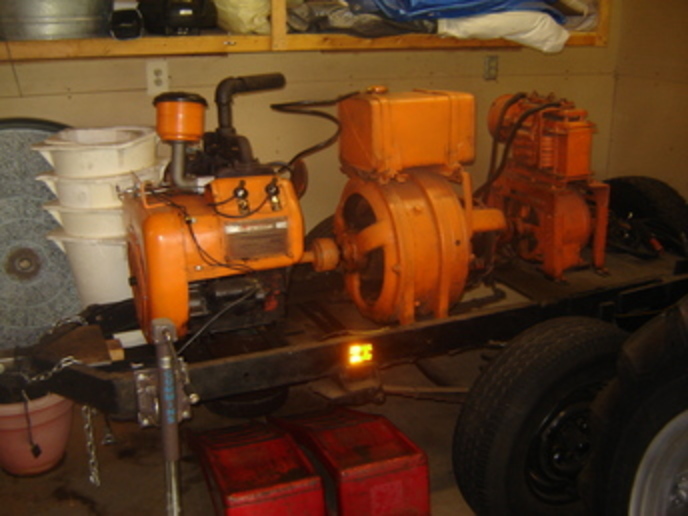Brian G. NY
Well-known Member
Didn't want to hijack the other thread so I started a new one.
MeAnthony wrote:
Wow, that must have been something to see! :
Why would it only work with DC? You're basically creating a short circuit in which the pipe becomes the conductor/resistance/heat source, right? Essentially the same as a light bulb works but on a heavier scale? Not trying to dispute your statement, just trying to learn and understand the "theory of operation".
Thanks!
It was something to see........as a kid, I remember seeing this a few times. A local mechanic, welder, TV repairman, etc., etc. used to hook his old DC welder up to the back of his car and take it to where ever someone needed their pipes thawed.
Many homes and barns were fed from springs with long underground pipes. With so much plastic being used to day, you're not likely to see this much anymore.
His welders were all hand built by himself from large generators.
I remember one was powered by a Model A engine and another with a 6 Cyl. engine out of a '36 olds.
Of course, these were DC welders.
Why AC would not work, I haven't a clue.
My Dad had a Forney AC welder which came with a "carbon-arc" torch for heating. You could also clamp the carbon electrodes to each side of a frozen nut and the nut would turn red in very short order. So, why wouldn't AC work as well as DC for thawing pipes?
MeAnthony wrote:
Wow, that must have been something to see! :
Why would it only work with DC? You're basically creating a short circuit in which the pipe becomes the conductor/resistance/heat source, right? Essentially the same as a light bulb works but on a heavier scale? Not trying to dispute your statement, just trying to learn and understand the "theory of operation".
Thanks!
It was something to see........as a kid, I remember seeing this a few times. A local mechanic, welder, TV repairman, etc., etc. used to hook his old DC welder up to the back of his car and take it to where ever someone needed their pipes thawed.
Many homes and barns were fed from springs with long underground pipes. With so much plastic being used to day, you're not likely to see this much anymore.
His welders were all hand built by himself from large generators.
I remember one was powered by a Model A engine and another with a 6 Cyl. engine out of a '36 olds.
Of course, these were DC welders.
Why AC would not work, I haven't a clue.
My Dad had a Forney AC welder which came with a "carbon-arc" torch for heating. You could also clamp the carbon electrodes to each side of a frozen nut and the nut would turn red in very short order. So, why wouldn't AC work as well as DC for thawing pipes?


